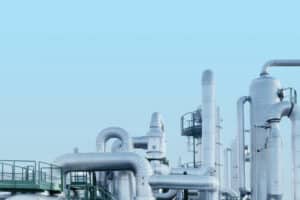
Researchers from Heriot-Watt University and EPFL have developed a machine learning algorithm to more accurately forecast amine emissions.
Researchers have used machine learning to accurately forecast amine emissions in carbon capture plants, which should give chemical engineers more awareness of the health hazards a plant may emit when capturing carbon emissions.
Carbon capture is a process that captures carbon dioxide before it is released into the environment, with it then being stored in an environmentally friendly way. Current carbon capture processes have a success rate of 50-68 percent, however, scientists working on the technology believe it could one day capture over 90 percent of all carbon emissions at a plant.
See Also: Data-Driven Edge Critical to the Modern Energy Environment
One of the downsides of carbon capture currently is it the process releases amines, which can be harmful to the environment. As there are many different carbon capture methods and it is a process still very much in development, it is still unclear why amine emissions are generated.
Being able to more accurately answer why and when amine emissions are happening could reduce the amount of amine being released from carbon capture facilities.
A group of scientists from Heriot-Watt University in Scotland and the Swiss Federal Institute of Technology Lausanne designed the machine learning algorithm, and tested it at Niederhauẞen, one of the largest coal-fired power plants in Germany.
“We developed an experimental campaign to understand how and when amine emissions would be generated. But some of our experiments also caused interventions of the plant’s operators to ensure the plant was operating safely,” said Professor Susana Garcia, associate director of carbon capture and storage at Heriot-Watt University.
The researchers built a pattern-recognition algorithm to predict emissions caused by interventions and ones caused by stress tests. With this model, operators and scientists can run scenarios to more accurately understand the amount of amine emissions released, and work towards lowering them.
“The potential impact of this work is enormous,” said Garcia. “We have been able to successfully forecast amine emissions from carbon capture plants that use the most advanced and latest state-of-the art amine-based technologies. This type of forecasting proved to be very challenging with any of the conventional approaches, so it may change the way we operate industrial plants. This work also highlights the key importance of having multidisciplinary teams if we want to successfully address global challenges.”




























